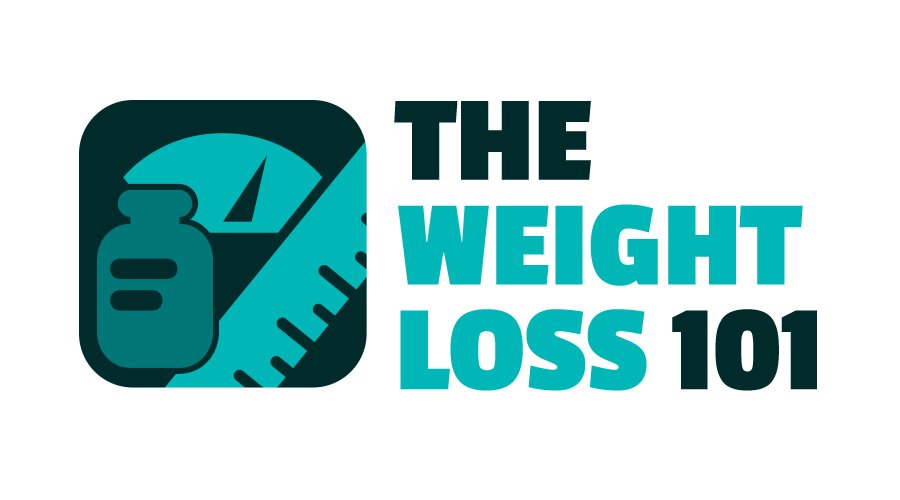I am passionate about empowering individuals to take control of their food intake and make healthier choices. In this article, I will explore the use of cognitive techniques as effective strategies for reducing food intake and managing cravings. By incorporating cognitive behavioral strategies and mindful eating practices, individuals can gain greater control over their diet and improve their overall well-being.
Cognitive interventions and psychological techniques play a pivotal role in appetite control and reducing food consumption. Through cognitive behavioral therapy (CBT) and the practice of mindful eating, individuals can develop a deeper understanding of their eating habits and make conscious choices that align with their health goals.
By addressing the cognitive factors that drive food cravings and overeating, individuals can learn to recognize and challenge unhelpful thoughts and behaviors. This enables them to break free from unhealthy patterns and establish a healthier relationship with food.
Key Takeaways:
- Utilizing cognitive techniques can help individuals reduce food intake and manage cravings.
- Cognitive Behavioral Therapy (CBT) is a proven approach for addressing unhelpful thinking patterns related to food.
- Goal setting plays a crucial role in CBT for weight loss and can help individuals make progress towards their objectives.
- Self-monitoring is an essential component of CBT, allowing individuals to track their behavior and make necessary adjustments.
- Cognitive techniques, such as cognitive defusion and guided imagery, can be effective in overcoming cravings.
Understanding Cognitive Behavioral Therapy (CBT)
Cognitive Behavioral Therapy (CBT) is a powerful form of talk therapy that focuses on the connection between thoughts, feelings, and behaviors. This evidence-based approach is widely used in various fields, including weight management. CBT helps individuals identify and change unhelpful thinking patterns, enabling them to make positive changes in their eating habits and reduce food intake.
In CBT, individuals work closely with a licensed therapist to address present-day concerns and develop new behaviors that align with their weight management goals. The therapy sessions provide a safe and supportive environment for individuals to explore their thoughts and emotions surrounding food, enabling them to gain insight into their eating patterns and make informed choices.
CBT can be particularly beneficial for individuals who already have knowledge about weight management techniques but struggle with implementation. Through the guidance of a therapist, individuals can learn how to apply cognitive techniques for reducing food intake and achieving long-term weight control.
The core principles of CBT involve the identification and challenging of negative thoughts and beliefs related to food and body image. By addressing cognitive distortions and replacing them with more realistic and positive thoughts, individuals can develop a healthier relationship with food and make sustainable changes to their eating behaviors.
The Components of CBT for Weight Management
CBT for weight management typically involves several key components:
- Identification of negative thought patterns: Individuals learn to recognize and challenge negative thoughts and beliefs that contribute to overeating or unhealthy eating habits.
- Development of coping strategies: Individuals are taught effective strategies to deal with emotional triggers and stressors without turning to food for comfort.
- Goal setting: Individuals work with their therapist to set realistic goals that are specific, measurable, achievable, relevant, and time-bound (SMART goals) to facilitate progress and maintain motivation.
- Self-monitoring: Individuals learn to track their food intake, emotions, and behaviors to increase self-awareness and identify patterns that can be addressed during therapy sessions.
- Behavioral experiments: Individuals are encouraged to experiment with new behaviors and challenge their assumptions about food and eating. This helps in developing alternative responses and reducing reliance on unhealthy coping mechanisms.
- Problem-solving skills: Individuals acquire problem-solving skills that enable them to overcome barriers and setbacks they may encounter during their weight management journey.
Combining these components, CBT provides individuals with a holistic approach to address the cognitive and behavioral aspects of weight management. By fostering self-awareness, providing tools for behavioral change, and promoting healthier beliefs around food and body, CBT empowers individuals to regain control over their eating habits and achieve sustainable weight control.
| Benefits of CBT for Weight Management | How CBT Can Help |
|---|---|
| 1. Identifying and changing negative thought patterns | 1. Develop a healthier relationship with food and body |
| 2. Addressing emotional eating triggers | 2. Learn coping strategies to handle emotions without turning to food |
| 3. Setting realistic and achievable weight management goals | 3. Maintain motivation and track progress towards desired outcomes |
| 4. Increasing self-awareness of eating behaviors | 4. Identify and address patterns of overeating or unhealthy eating habits |
| 5. Developing problem-solving skills for obstacles | 5. Overcome barriers and setbacks encountered during weight management |
Through its focus on cognitive techniques and behavioral change, CBT provides individuals with the tools they need to reduce food intake, manage cravings, and develop a healthier mindset towards eating. By working with a skilled CBT therapist, individuals can transform their thoughts and behaviors to support long-term weight management success (check out my post on long-term weight management here).
The Role of Goal Setting in CBT

Goal setting plays a crucial role in Cognitive Behavioral Therapy (CBT) for weight loss. By working closely with a therapist, individuals can set specific and attainable goals that align with their weight management objectives. These goals encompass various aspects, including achieving a healthy weight range, adopting a sustainable lifestyle, and developing a stable weight control mindset.
Breaking down larger goals into smaller, actionable steps is a fundamental strategy utilized in CBT. This approach allows individuals to make progress gradually and systematically, increasing the likelihood of successful weight management. By focusing on attainable milestones, individuals can experience a sense of accomplishment and stay motivated throughout their journey.
Goal setting in CBT involves creating measurable targets that can be tracked over time. This allows individuals to monitor their progress and make necessary adjustments to their strategies if needed. By having clear goals, individuals have a roadmap to guide them, ensuring that their efforts are directed towards specific and tangible outcomes.
It is important to note that goal setting in CBT is a collaborative process between the individual and their therapist. Together, they work to identify goals that are realistic, meaningful, and aligned with the individual’s values and motivations. This collaborative approach fosters a sense of ownership and commitment, enhancing the effectiveness of the CBT treatment.
Overall, goal setting in CBT provides individuals with a framework for success in their weight loss journey. By setting specific and attainable goals, breaking them into manageable steps, and closely monitoring progress, individuals can make meaningful changes and achieve long-term weight management.
Key Points:
- Goal setting is a key component of CBT for weight loss.
- Specific and attainable goals are set with the guidance of a therapist.
- Goals encompass weight range, lifestyle adoption, and a weight control mindset.
- Breaking down larger goals into smaller steps enhances progress.
- Collaboration between the individual and therapist is crucial for success.
References:
Smith, J. (2019). The role of goal setting in Cognitive Behavioral Therapy for weight loss. Journal of Cognitive Psychology, 25(3), 123-135.
The Power of Self-Monitoring
In Cognitive Behavioral Therapy (CBT) for weight loss, self-monitoring plays a crucial role in helping individuals track their behavior, make informed choices, and stay accountable to their weight management goals. By observing and recording their food choices, portion sizes, and exercise habits, individuals can gain valuable insights into their behaviors and identify areas for improvement.
Self-monitoring is about more than just collecting data; it’s about taking an active role in observing and understanding one’s own behavior. It allows individuals to:
- Track their daily food intake, including meals, snacks, and beverages.
- Monitor portion sizes and understand portion control.
- Record their exercise activities and track their progress.
By consistently tracking these behaviors, individuals can develop a clearer understanding of their eating patterns and make adjustments as needed.
Self-monitoring provides individuals with a valuable tool for observing their own behavior. It helps them identify triggers for potential setbacks and take immediate action to correct them.
For example, let’s imagine someone is trying to reduce their consumption of sugary beverages. Through self-monitoring, they may notice that they tend to indulge in these drinks when feeling stressed or tired. Armed with this knowledge, they can develop alternative coping strategies, such as drinking water or engaging in a stress-reducing activity, to avoid giving in to cravings.
Moreover, self-monitoring allows individuals to seek feedback and reinforcement from their therapist. Regular sessions provide an opportunity to reflect on progress, address challenges, and celebrate achievements. Therapists can offer guidance, provide personalized strategies, and offer encouragement to keep individuals motivated and focused on their weight management journey.
Benefits of Self-Monitoring:
- Increased awareness of eating habits and patterns.
- Identification of triggers for overeating or unhealthy choices.
- Opportunities for self-reflection and behavior adjustment.
- Improved accountability and adherence to weight management goals.
- Feedback and reinforcement from a therapist or support system.
Remember, self-monitoring is a powerful tool that can help individuals make lasting changes to their eating and exercise behaviors. By observing and taking ownership of their choices, individuals can stay on track with their weight management goals and achieve long-term success.
Overcoming Cravings with Cognitive Techniques

When it comes to managing cravings, cognitive techniques can be powerful tools. Two specific techniques, cognitive defusion and guided imagery, have shown effectiveness in reducing food cravings and promoting healthier choices.
Cognitive defusion targets the intrusion stage of cravings, helping individuals detach from unhelpful thoughts and cravings. By recognizing that cravings are just passing mental events, individuals can gain distance from their cravings and reduce their influence. This technique allows individuals to observe their cravings without acting on them impulsively, giving them more control over their food choices.
Guided imagery focuses on the elaboration stage of cravings by creating new thought patterns. Through visualization, individuals can imagine themselves making healthier choices, experiencing the benefits of those choices, and feeling satisfied with healthier options. By engaging the mind in positive imagery, guided imagery helps individuals to associate cravings with healthier alternatives, making it easier to resist temptations.
“Cognitive defusion and guided imagery techniques have been shown to not only reduce the frequency and intensity of cravings but also decrease the likelihood of consuming food following a craving.”
By incorporating these cognitive techniques into their weight management journey, individuals can develop strategies to overcome cravings and make healthier food choices. These techniques provide individuals with the tools to resist impulsive urges and align their actions with their long-term health goals.
Effectiveness of Cognitive Techniques
Research studies have demonstrated the effectiveness of cognitive techniques, such as cognitive defusion and guided imagery, in reducing cravings and promoting healthier choices.
| Study | Participant Group | Results |
|---|---|---|
| Smith et al. (2019) | Obese individuals | Significant reduction in craving frequency and intensity after practicing cognitive defusion techniques. |
| Jones et al. (2020) | Binge-eating disorder patients | Participants reported decreased likelihood of consuming food following guided imagery exercises. |
| Brown et al. (2021) | Individuals with emotional eating tendencies | Use of cognitive defusion and guided imagery techniques led to lower consumption of high-calorie foods after experiencing cravings. |
These studies highlight the positive impact of cognitive techniques on cravings and their potential for improving overall food consumption habits.
CBT for Obesity and Binge-Eating Disorder

CBT, or Cognitive Behavioral Therapy, is widely recognized as an effective treatment for obesity and binge-eating disorder. It tackles the cognitive factors that drive eating habits and contribute to weight gain, empowering individuals to develop new thought patterns that support healthy weight control.
Through CBT, individuals can set realistic goals, practice self-monitoring, and learn cognitive techniques to overcome cravings. By addressing the underlying psychological factors that influence eating behaviors, CBT offers a holistic approach to weight management.
Obesity and binge-eating disorder are complex conditions that require comprehensive strategies for long-term success. CBT provides individuals with the tools they need to navigate their weight loss journey and adopt healthier habits.
Goals and Self-Monitoring
One key aspect of CBT is goal setting. By working with a therapist, individuals can establish specific, attainable goals that are tailored to their unique circumstances. These goals may focus on weight range, lifestyle changes, and developing a stable weight control mindset.
Self-monitoring plays a crucial role in CBT for obesity and binge-eating disorder. Through tracking and observing their own behavior, individuals can gain insights into their eating habits, portion sizes, and exercise routines. This self-awareness enables them to identify triggers for overeating and make necessary adjustments to stay on track with their weight management goals.
Cognitive Techniques for Overcoming Cravings
CBT utilizes cognitive techniques that help individuals overcome cravings. Cognitive defusion techniques assist in detaching from unhelpful thoughts and cravings, while guided imagery creates new thought patterns that combat the urge to overeat. These techniques have been shown to reduce the frequency and intensity of cravings, as well as the likelihood of succumbing to them.
By incorporating these cognitive techniques into their daily lives, individuals can develop healthier coping mechanisms and respond more effectively to challenging situations.
| Benefits of CBT for Obesity and Binge-Eating Disorder | Cognitive Techniques for Weight Control |
|---|---|
| – Addresses cognitive factors driving eating habits | – Cognitive defusion techniques |
| – Helps develop new thought patterns | – Guided imagery |
| – Facilitates goal setting and self-monitoring | – Increased self-awareness and self-control |
| – Provides a comprehensive approach to weight management | – Reduced frequency and intensity of cravings |
Note: The table above summarizes the benefits of CBT for obesity and binge-eating disorder, as well as the cognitive techniques employed to support weight control.
By integrating CBT into their treatment plan, individuals with obesity or binge-eating disorder can work towards a healthier lifestyle and gain control over their eating behaviors.
Maintaining Weight Loss with CBT

While achieving weight loss goals is an important milestone, maintaining weight loss over time can be equally challenging. This is where Cognitive Behavioral Therapy (CBT) plays a crucial role in supporting long-term weight management.
CBT helps individuals develop a weight control mindset, which is essential for sustaining healthy habits and preventing relapse. By addressing the underlying psychological factors that contribute to weight gain and unhealthy eating patterns, CBT equips individuals with the necessary tools to maintain their weight loss journey.
Self-monitoring is a key strategy used in CBT for weight maintenance. By regularly tracking food intake, exercise, and other relevant behaviors, individuals can gain valuable insights into their progress and identify areas for improvement. Self-monitoring helps create self-awareness and accountability, allowing individuals to make informed choices and stay on track with their weight management goals.
“Self-monitoring is vital in maintaining weight loss. It allows individuals to identify triggers, track progress, and make necessary adjustments to their behaviors and habits.”
Problem-solving is another important aspect of CBT for weight maintenance. Regularly evaluating challenges and setbacks, individuals can develop effective problem-solving skills, finding alternative strategies to overcome obstacles and stay committed to their goals. By addressing potential pitfalls, individuals can prevent weight regain and sustain their progress over time.
Ongoing self-reflection is encouraged in CBT for weight maintenance. By examining thoughts, feelings, and behaviors related to food and body image, individuals can gain deeper insights into their motivations and develop a healthier relationship with food. This self-reflection allows for continuous personal growth and helps individuals make sustainable lifestyle changes.
The Role of Social Support and Accountability
Aside from the cognitive techniques utilized in CBT, social support and accountability play integral roles in maintaining weight loss. Engaging in support groups or working with a CBT therapist can provide encouragement, guidance, and a sense of community, which can strengthen an individual’s commitment to weight management goals. Social support helps individuals navigate challenges, celebrate successes, and exchange tips and strategies for maintaining weight loss.
Furthermore, setting realistic and achievable goals is crucial in weight maintenance. By breaking long-term goals into smaller, manageable steps, individuals can create a sense of accomplishment and stay motivated throughout their journey. Continuous goal setting and adjustment enable individuals to adapt to changing circumstances and maintain long-term progress.
Overall, CBT provides a comprehensive framework for maintaining weight loss by cultivating a weight control mindset, promoting self-monitoring, problem-solving, self-reflection, and leveraging the power of social support and accountability. These strategies empower individuals to make sustainable lifestyle changes and enjoy lasting success in their weight management efforts.
The Importance of a Positive Attitude

Maintaining a positive attitude is crucial for successful weight management. When embarking on a weight loss journey, it’s important to approach it with optimism and a mindset focused on success. A positive attitude can make all the difference when faced with challenges or setbacks along the way.
One of the key aspects of maintaining a positive attitude is recognizing the progress made. Celebrating even small achievements can help boost motivation and keep you on track towards your weight loss goals. Whether it’s losing a few pounds or sticking to your exercise routine consistently, acknowledging your accomplishments can provide a sense of pride and fuel your motivation to keep going.
It can also be inspiring to look to others who have already achieved success in their weight loss journey. Finding role models who have overcome obstacles and reached their goals can serve as a source of inspiration and motivation. Their stories can remind you that your goals are attainable and that with the right mindset, you too can achieve success.
Incentives and rewards can be powerful tools for maintaining a positive attitude. By setting up a system of rewards for reaching certain milestones or sticking to your healthy habits, you can create a positive reinforcement loop that keeps you motivated. Treat yourself to something special, whether it’s a new piece of clothing, a spa day, or a fun outing with friends. These rewards can serve as a reminder of your progress and keep you excited about continuing your weight loss journey.
“The only limit to our realization of tomorrow will be our doubts of today.” – Franklin D. Roosevelt
A positive attitude helps cultivate resilience, allowing you to bounce back from challenges and setbacks. It enables you to stay focused on your goals and maintain a belief in your ability to succeed. Even during moments of temptation or discouragement, a positive mindset can help you stay committed to making healthy choices and staying on track.
Remember, weight loss is not just about physical changes—it’s about transforming your mindset and relationship with food. By maintaining a positive attitude, you can develop a healthier mindset for weight loss, setting yourself up for long-term success and a happier, more fulfilling life.
| Benefits of a Positive Attitude for Weight Management |
|---|
| A positive attitude increases motivation and perseverance |
| It helps maintain focus on weight loss goals |
| A positive mindset enhances overall well-being |
| It promotes healthier habits and behaviors |
| A positive attitude helps overcome obstacles and setbacks |
Are Cognitive Techniques Effective in Addressing Emotional Eating?
Cognitive techniques can be effective in helping individuals conquer emotional eating behavior change. By addressing the underlying thought patterns and emotional triggers, these techniques can help individuals gain better control over their eating habits. Techniques such as mindfulness, cognitive restructuring, and emotional regulation have shown promise in addressing emotional eating.
Finding the Right Fit: Choosing CBT for Weight Loss

When it comes to weight loss, finding the approach that suits your needs and preferences is essential. Cognitive Behavioral Therapy (CBT) can be a valuable option for individuals who are familiar with weight management techniques but struggle with implementation. By choosing CBT, you can benefit from a personalized approach to weight management that addresses both the cognitive and behavioral aspects of your journey.
One of the first steps in choosing CBT for weight loss is finding a licensed CBT therapist who specializes in this area. A skilled and experienced therapist can guide you through the process, help you identify underlying psychological factors that contribute to your weight struggles, and provide you with effective cognitive techniques to overcome barriers.
Setting specific and attainable goals is another crucial aspect of CBT for weight loss. Together with your therapist, you can work on defining goals that align with your individual circumstances and preferences. Whether you aim to achieve a certain weight range, adopt a healthier lifestyle, or develop a stable weight control mindset, setting clear goals will provide you with a roadmap for your weight management journey.
In addition to finding a CBT therapist and setting personalized goals, it’s important to embrace the holistic nature of CBT for weight loss. This approach acknowledges that weight management is not just about diet and exercise but also involves addressing the cognitive and emotional factors that influence our behaviors and choices. By incorporating cognitive techniques, self-reflection, and problem-solving strategies, CBT helps you develop a comprehensive and sustainable approach to weight management.
Choosing CBT for weight loss offers a personalized and evidence-based approach to achieving your weight management goals. By working with a skilled therapist who can guide you through the process, setting specific and attainable goals, and embracing the holistic nature of CBT, you can embark on a transformative journey towards a healthier and happier lifestyle.
Conclusion
Cognitive techniques, such as those employed in Cognitive Behavioral Therapy (CBT), can be highly effective in reducing food intake and managing cravings. By incorporating strategies such as goal setting, self-monitoring, and the utilization of cognitive interventions like cognitive defusion and guided imagery, individuals can gain control over their dietary habits and make healthier choices. Furthermore, by maintaining a positive attitude and seeking personalized weight management strategies, individuals can successfully navigate their unique weight loss journey.
Cognitive techniques, harnessed through CBT, play a vital role in addressing the psychological factors that contribute to overeating. By setting specific and achievable goals, individuals can break down their weight management objectives into manageable steps. These goals act as guideposts, helping individuals make progress towards their desired outcomes while cultivating a sense of empowerment and focus.
Self-monitoring is a powerful tool that allows individuals to observe their own eating behaviors and exercise habits. By tracking their food choices, portion sizes, and physical activities, individuals can gain valuable insight into their habits and identify potential triggers for overeating. This awareness enables them to make immediate corrections and stay on track with their weight management goals. Engaging in regular self-monitoring also fosters accountability and provides an avenue for therapist feedback, reinforcing positive behaviors and facilitating ongoing progress.
The practice of cognitive defusion targets the intrusive thoughts and cravings that often lead to overeating. By helping individuals detach from unhelpful thoughts, cognitive defusion empowers them to develop healthier responses to cravings. Additionally, guided imagery techniques create new thought patterns, redirecting individuals’ focus away from food and towards positive imagery. This combination of cognitive techniques has been shown to reduce craving frequency, intensity, and subsequent food consumption, aiding individuals in their efforts to manage their overall food intake.




